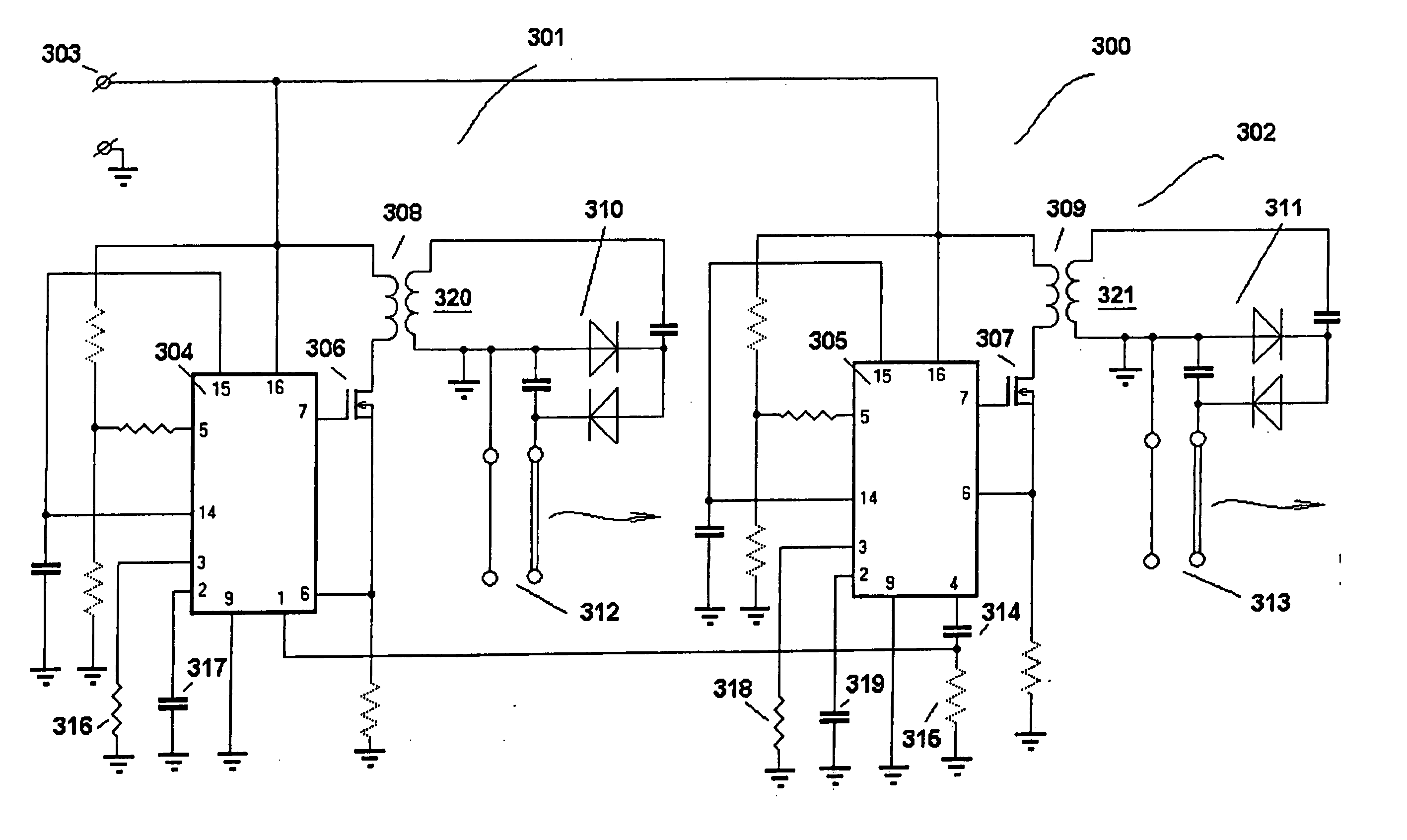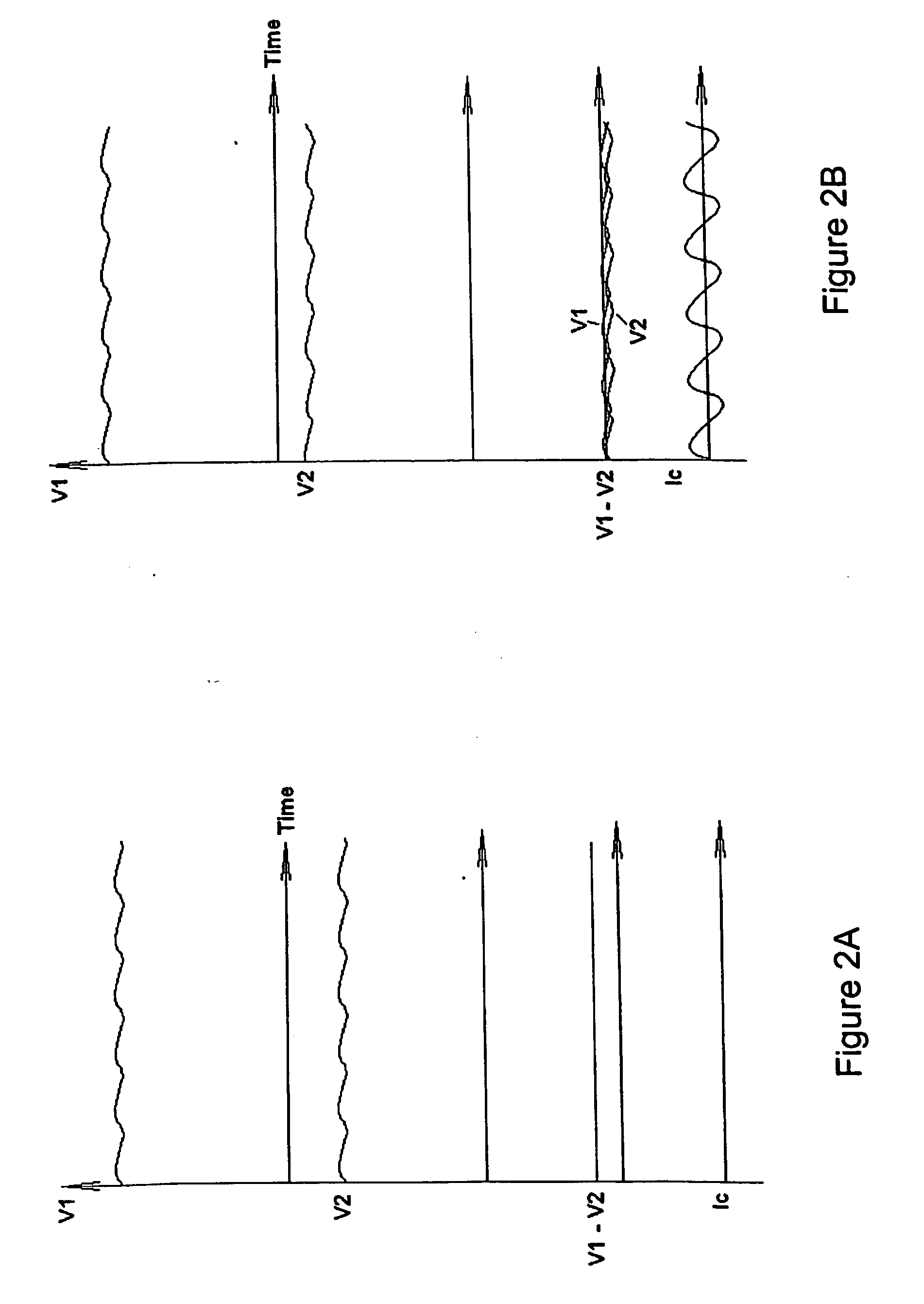Electrostatic fluid accelerator for and a method of controlling fluid flow
a fluid accelerator and electrostatic technology, applied in the direction of electric supply techniques, instruments, corona discharge, etc., can solve the problems of excessive size requirements of multi-stage efa devices, parasitic current flow between neighboring stages, and inability to generate sparks between electrodes, etc., to achieve the effect of eliminating or significantly reducing stray currents, increasing efa electrode density, and eliminating or reducing stray currents
- Summary
- Abstract
- Description
- Claims
- Application Information
AI Technical Summary
Benefits of technology
Problems solved by technology
Method used
Image
Examples
Embodiment Construction
[0027]FIG. 1A is a schematic diagram of an Electrostatic Fluid Accelerator (EFA) device 100 comprising two EFA stages 114 and 115. First EFA stage 114 includes corona discharge electrode 106 and associated accelerating electrode 112; second EFA stage 115 includes corona discharge electrode 113 and associated accelerating electrode 111. Both EFA stages and all the electrodes are shown schematically. Only one set of corona discharge and collecting electrodes are shown per stage for ease of illustration, although it is expected that each stage may include a large number of arrayed pairs of corona and accelerating electrodes. An important feature of EFA 100 is that the distance d1 between the corona discharge electrode 106 and collector electrode 112 is comparable to the distance d2 between collector electrode 112 and the corona discharge electrode 113 of the subsequent stage 115, i.e., the closest distance between elements of adjacent stages is not much greater than the distance betwee...
PUM
 Login to View More
Login to View More Abstract
Description
Claims
Application Information
 Login to View More
Login to View More - R&D
- Intellectual Property
- Life Sciences
- Materials
- Tech Scout
- Unparalleled Data Quality
- Higher Quality Content
- 60% Fewer Hallucinations
Browse by: Latest US Patents, China's latest patents, Technical Efficacy Thesaurus, Application Domain, Technology Topic, Popular Technical Reports.
© 2025 PatSnap. All rights reserved.Legal|Privacy policy|Modern Slavery Act Transparency Statement|Sitemap|About US| Contact US: help@patsnap.com



